Posts Tagged: queen
It's Bee-ginning to Look a Lot Like...
It's bee-ginning to look a lot like Christmas... All hail our littlest agricultural worker. European colonists brought the honey bee (Apis...
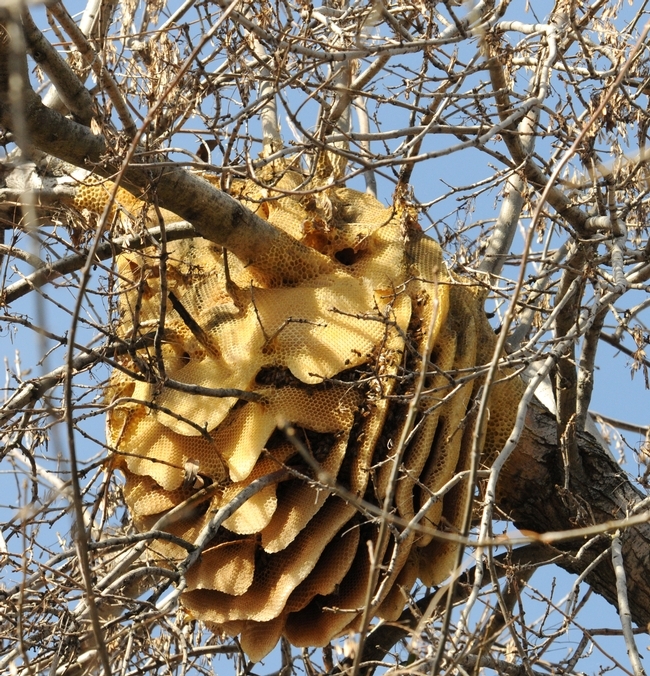
A feral honey bee colony (now gone) from a backyard in Vacavile, Calif. (Photo by Kathy Keatley Garvey)
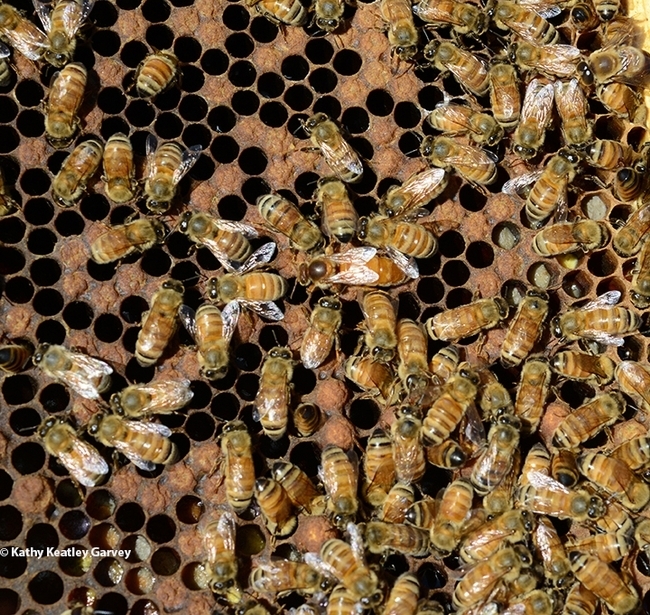
Inside a managed hive at UC Davis. (Photo by Kathy Keatley Garvey)
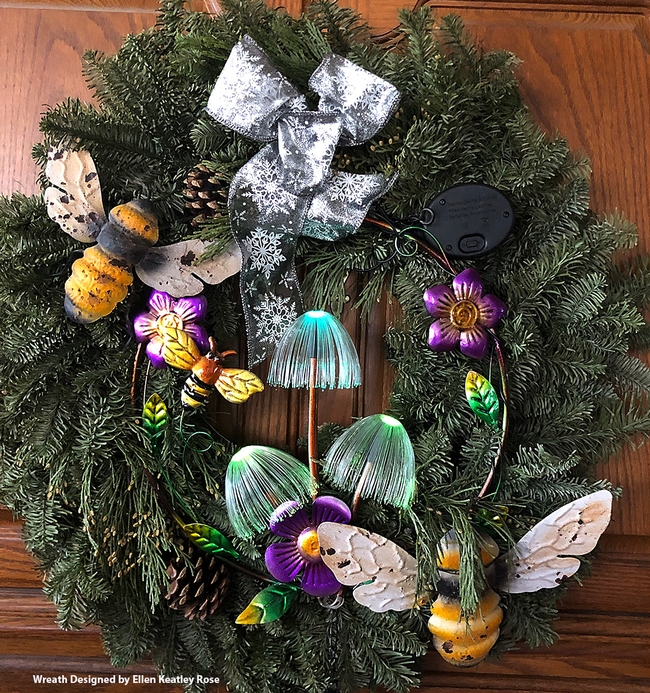
A bee-utiful Christmas wreath, designed and crafted by Ellen Keatley Rose of Castle Rock, Wash. (Photo by Kathy Keatley Garvey)
No Labor Day Holiday for Honey Bees
On Labor Day, a federal holiday, we celebrate the our country's labor movement, our gratitude, and our achievements. But there is no Labor Day...
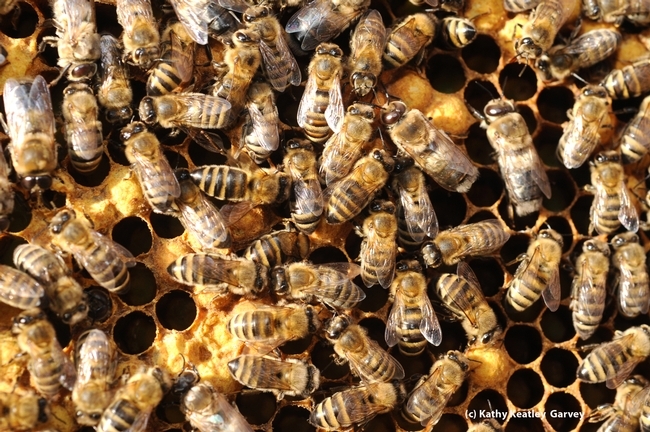
Worker bees are aptly named. They comprise most of the bees in the colony and do most of the work. (Photo by Kathy Keatley Garvey)
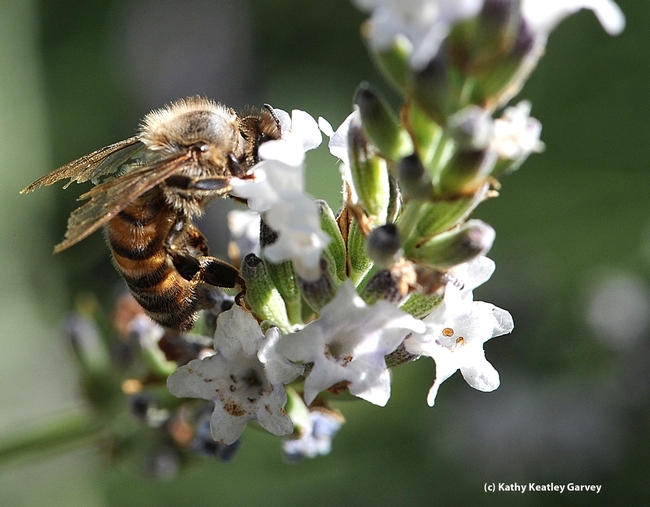
This aging worker bee is all tattered and torn. (Photo by Kathy Keatley Garvey)
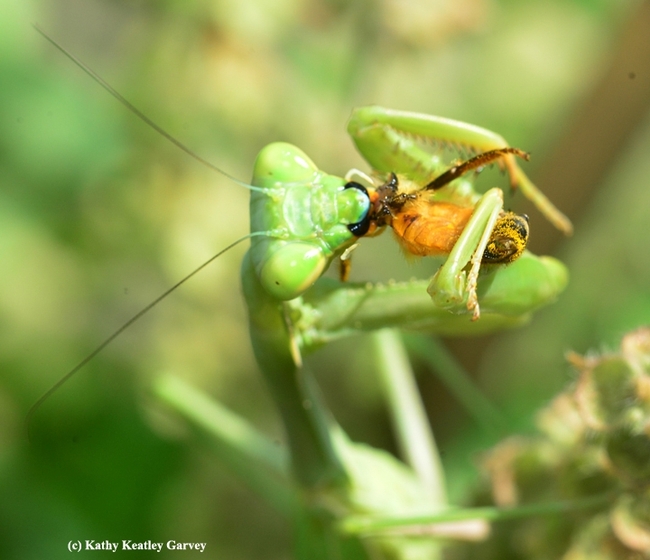
Foraging can be dangerous. Here a praying mantis has just nabbed a worker bee. (Photo by Kathy Keatley Garvey)
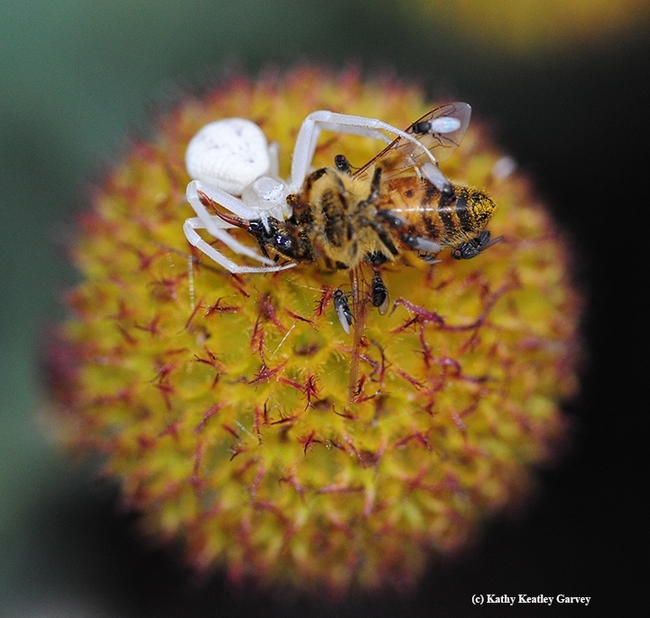
A crab spider feeding on a honey bee. Crab spiders are ambush predators. (Photo by Kathy Keatley Garvey)
Learn About Honey Bees at the California Honey Festival
If you haven't been around honey bees much, and can't distinguish the queen from a worker bee (sterile female) or drone (male bee), head over the...
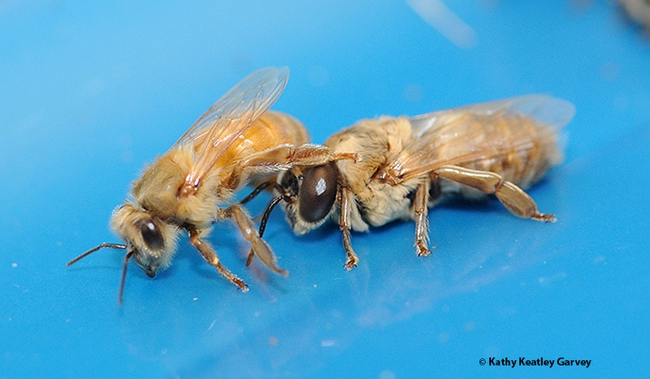
The worker bee (sterile female) is at left, and the drone (male) is at right. (Photo by Kathy Keatley Garvey)
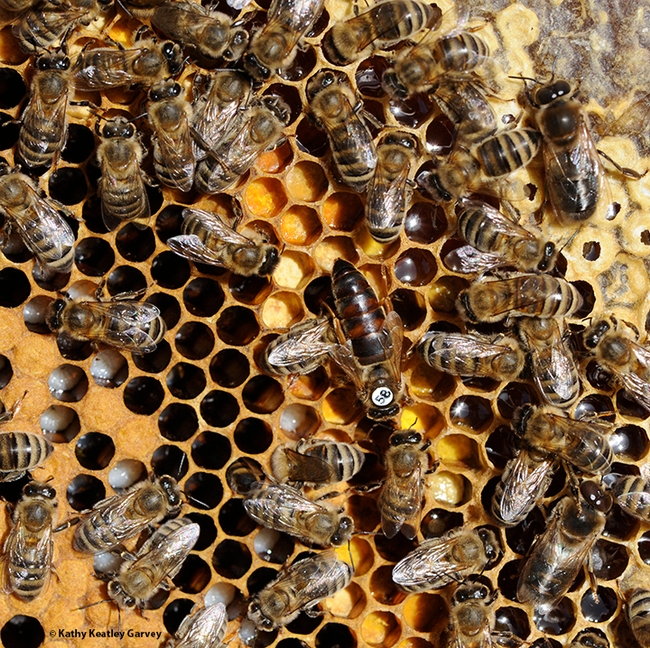
Can you find the queen, the workers and the drones? (Photo by Kathy Keatley Garvey)
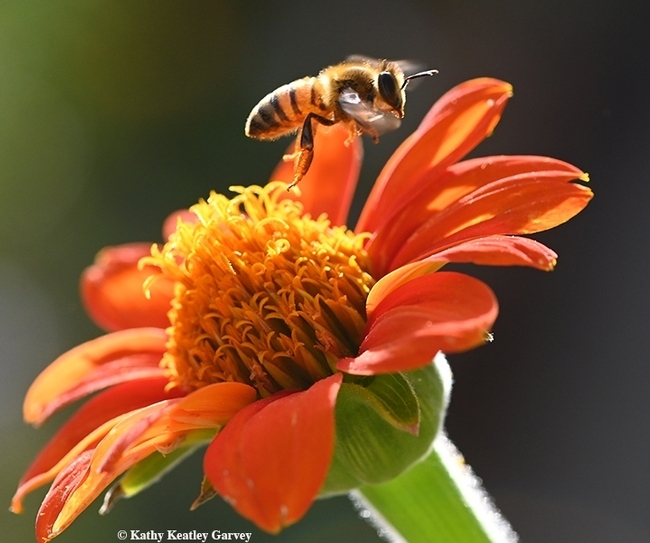
Worker bees are sterile females. Here a worker bee (forager) leaves a Mexican sunflower, Tithonia rotundifola. (Photo by Kathy Keatley Garvey)
A Royal Moment with a Queen Bumble Bee
It's Thanksgiving Day and time to give thanks for NOT what we WANT, but what we HAVE. And, not for what we OWN, but what we CANNOT. That includes...
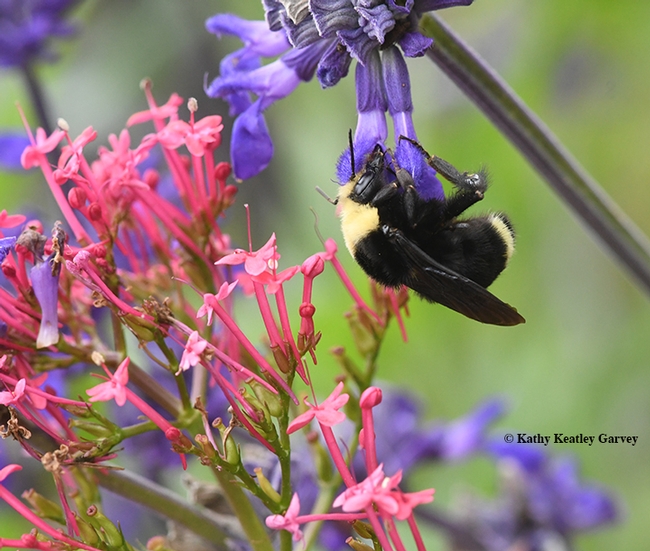
A queen bumble bee, Bombus vosnesenskii, nectaring on Salvia indigo spires in Kate Frey's pollinator garden on Nov. 12, 2017 at the Sonoma Cornerstone. (Photo by Kathy Keatley Garvey)
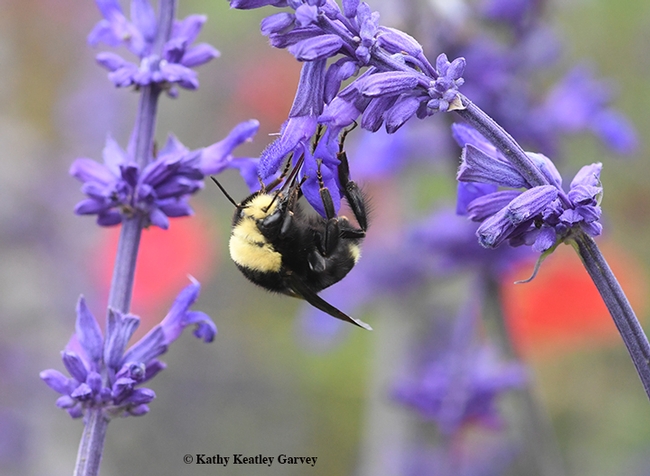
The queen Bombus vosnesenskii begins her bumble bee acrobatics in the Kate Frey pollinator garden, Sonoma Cornerstone. (Photo by Kathy Keatley Garvey)
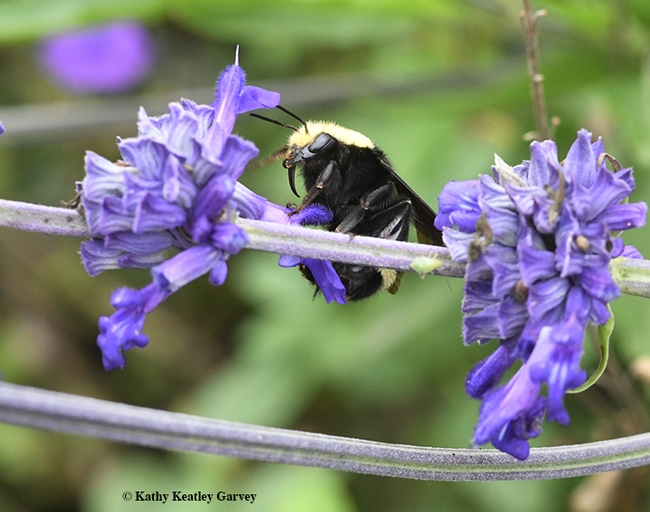
Ah, nectar. The queen bumble bee extends her tongue (proboscis). (Photo by Kathy Keatley Garvey)
Thank a Farmer, Thank a Beekeeper
You may have missed it, but today (Thursday, Oct. 12) is National Farmers' Day. The day originated back in the 1800s as a way to recognize and thank...
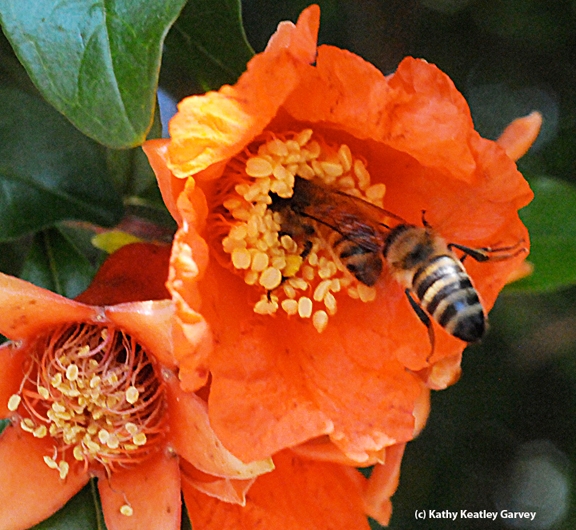
Two honey bees want the same pomegranate blossom. (Photo by Kathy Keatley Garvey)
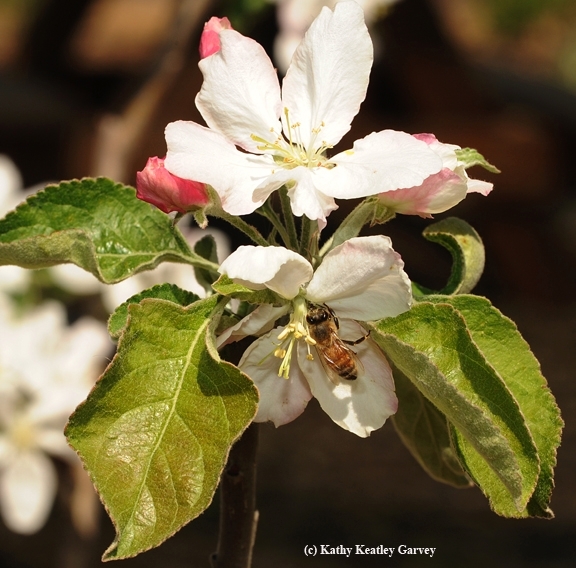
A honey bee pollinating an apple blossom. (Photo by Kathy Keatley Garvey)
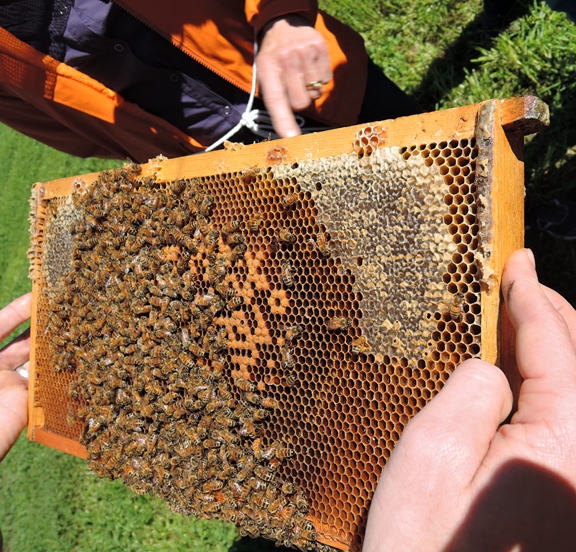
A new beekeeper examines a frame during a UC Davis honey bee course at the Harry H. Laidlaw Jr. Honey Bee Research Facility. Extension apiculturist Elina Lastro Niño and her staff teach classes for the public. (Photo by Kathy Keatley Garvey)

